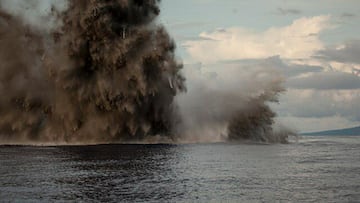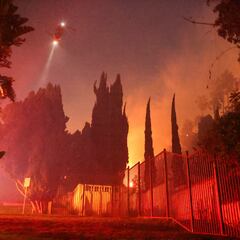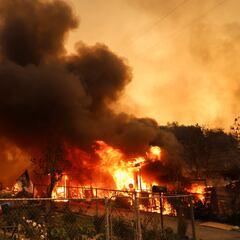Experts predict this underwater volcano off the Oregon coast will erupt sometime in 2025
Thanks to a network of sensors and the use of artificial intelligence, scientists are predicting the awakening of the Axial Seamount, off the Oregon coast.

Forecasting volcanic activity remains one of the greatest challenges for scientists. The unpredictable nature of volcanoes has made it difficult to develop accurate methods to anticipate eruptions, especially those located under the sea.
However, a team of researchers from Oregon State University has made a significant breakthrough by predicting the eruption of an underwater volcano in the Pacific Ocean this year. This achievement not only marks a milestone in volcanology, but could revolutionize the way scientists study and monitor these natural phenomena.
The volcano in question, known as Axial Seamount, is more than 3,600 feet high, located 300 miles off the coast of Oregon. After more than 10 years of research, the team led by geophysicist William Chadwick has detected signals that indicate that the volcano could awaken sometime in 2025.
The data reveal that Axial Seamount’s surface is swelling in a manner similar to what occurred before its last eruption in 2015, suggesting that magma is building up inside it and could trigger renewed volcanic activity.
READ ALSO: These are the major landmarks threatened by the LA fires
Innovation in underwater monitoring
One of the keys to this success lies in the innovative network of sensors they have installed in the depths of the ocean. These devices, located almost a thousand miles below sea level, allow scientists to detect even the smallest movements of the volcano.
Unlike other underwater volcanoes, Axial Seamount is being monitored in real time using a system that constantly transmits data via an underwater cable. This non-stop surveillance has made it possible to identify the first signs of volcanic activity, giving researchers a unique advantage in predicting its eruption.
Axial Seamount off Oregon's coast is the most active volcano in the Pacific Northwest, about 300 miles offshore and just under a mile beneath the ocean waves. https://t.co/Ta15FkMgcW
— The Seattle Times (@seattletimes) January 9, 2025
Monitoring underwater volcanoes is essential, not only because it helps us better understand their behavior, but also because of the importance they have in terms of safety.
A clear example of this is the eruption of the Hunga Tonga volcano in 2022, whose impact was devastating, causing a tsunami that damaged several countries and left millions in economic losses. Experts emphasize that as technology improves, more accurate predictions can save lives and reduce collateral damage from these sometimes-destructive natural phenomena.
Artificial intelligence at the service of prediction
One of the most promising tools in this field is artificial intelligence. In the case of Axial Seamount, researchers have developed a system that uses AI to analyze earthquakes prior to eruptions.
This algorithm is capable of identifying subtle patterns that, according to the data collected, could indicate the imminence of an eruption. With this system, scientists can now anticipate the start of volcanic activity hours in advance, a capability that, until now, was unthinkable.
Dr Rebecca Carey, a volcanologist at the University of Tasmania, is particularly excited by this prediction. Instead of relying on alerts based on estimates, the team will be able to observe the eruption live via remotely controlled underwater vehicles.
This will allow the volcanic process to be studied up close, and it will also provide a unique opportunity to study the impact of the eruption on nearby marine ecosystems, thereby expanding knowledge of how underwater volcanoes affect the environment around them.
A promising future for eruption prediction
Unlike land-based volcanoes, underwater monitoring has an advantage: scientists can study these events without the risk of causing panic among the population.
Since there are no nearby populations that need to be evacuated, experts can focus exclusively on scientific observation, allowing them to obtain more precise and reliable data.
The lessons learned from Axial Seamount will be key to predicting future underwater eruptions in other parts of the world, thus improving scientists' ability to anticipate these natural hazards and minimize the associated risks.
Related stories
Get your game on! Whether you’re into NFL touchdowns, NBA buzzer-beaters, world-class soccer goals, or MLB home runs, our app has it all.
Dive into live coverage, expert insights, breaking news, exclusive videos, and more – plus, stay updated on the latest in current affairs and entertainment. Download now for all-access coverage, right at your fingertips – anytime, anywhere.


Complete your personal details to comment